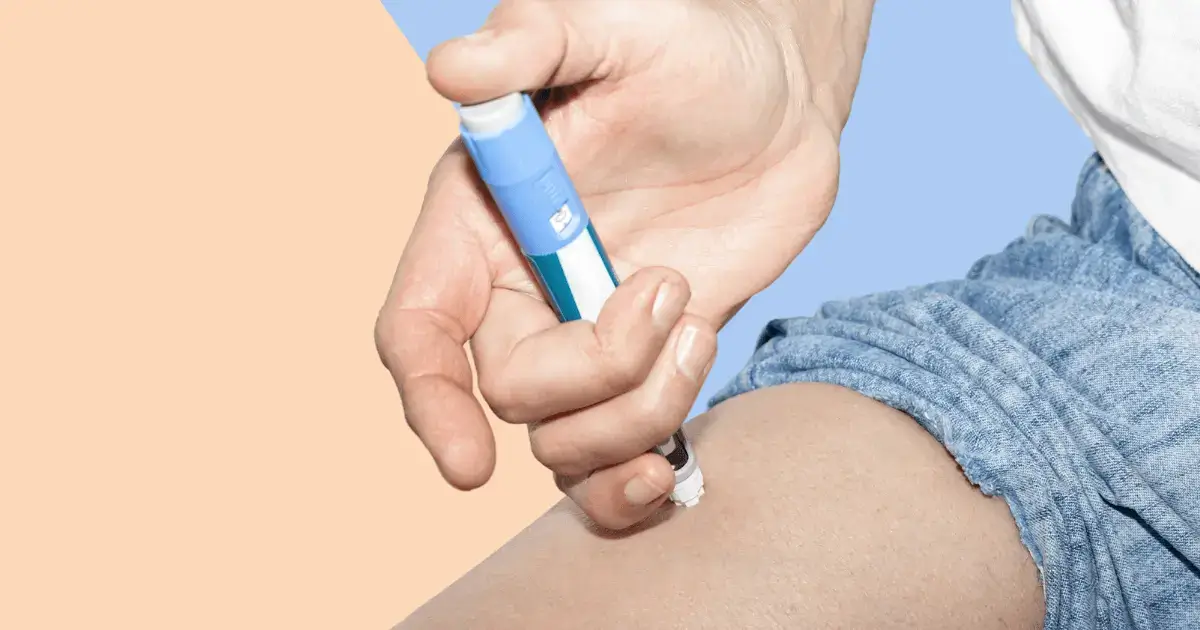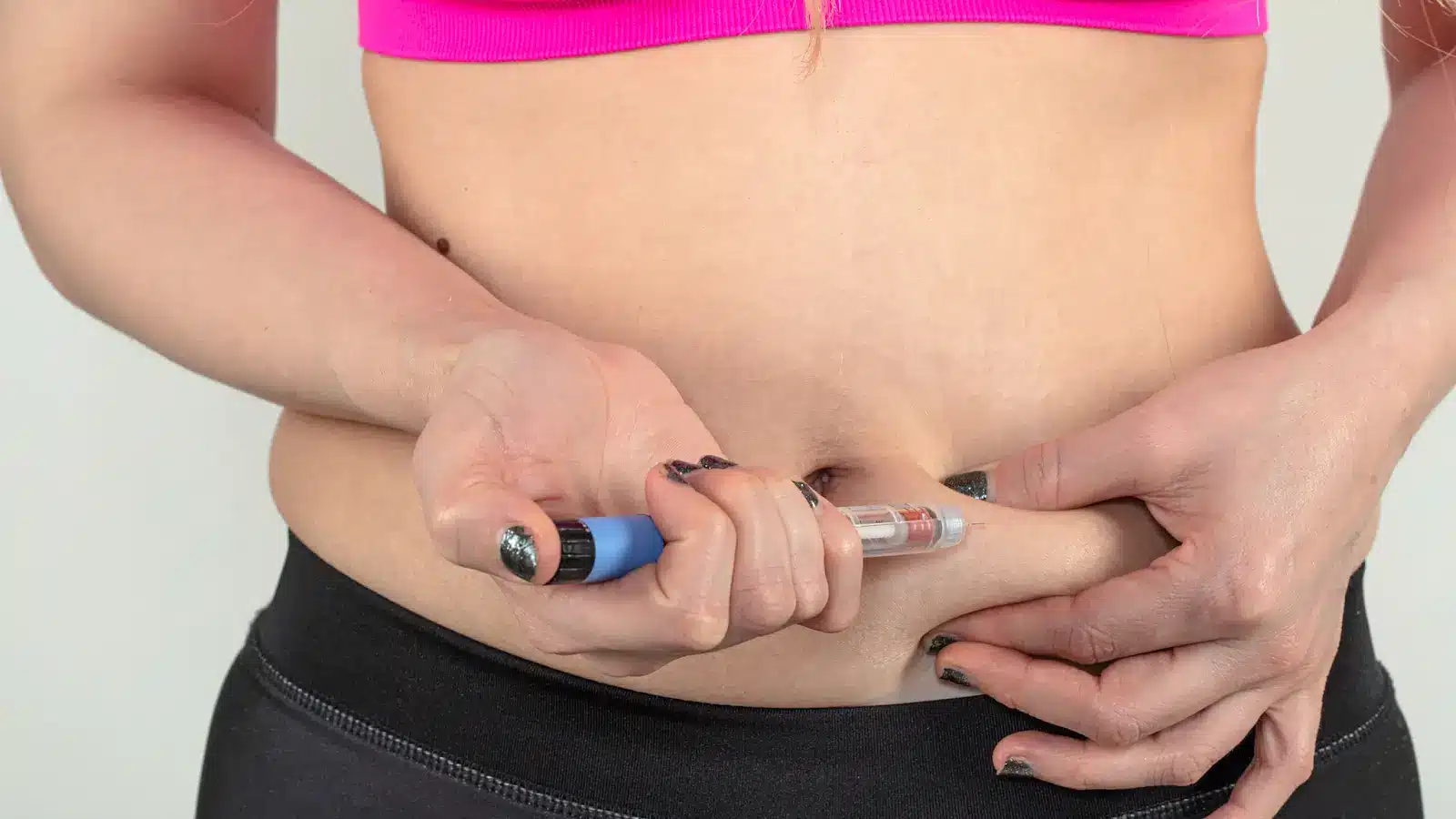
Where you place an injection can make more of a difference than you might think. The right injection site can affect how comfortable the shot feels, how your skin responds over time, and even how smoothly the medication is absorbed.
For people using Ozempic (semaglutide), a once-weekly injection for type 2 diabetes and weight management, knowing the best places to inject is key to making the process stress-free and straightforward. With a bit of know-how, you can rotate injection sites safely, protect your skin health, and build a routine that feels easy to stick with.
In this guide, we’ll walk through the most common injection areas, why location matters, and a few small technique tips that can make your weekly shot much more comfortable.
Key Takeaways
- Approved injection sites for Ozempic include the abdomen, thigh, and upper arm.
- The abdomen is the most common site because it’s the easiest to reach and has the largest surface area for safe rotation, not because it absorbs better.
- Rotate injection sites each week to reduce irritation and lower the risk of lipohypertrophy (fatty lumps), even though the risk is relatively low with once-weekly dosing.
- Follow proper injection technique: clean the site, use a new needle, and inject into the subcutaneous layer (not muscle).
- Comfort tips include using room-temperature pens, relaxing the muscle, and avoiding bruised or scarred areas. Light massage is optional and should only be done if it feels comfortable.
- Common mistakes to avoid: injecting too close to the navel, reusing needles, injecting through clothing, or skipping site cleaning.
About: Doctor Medica is your trusted supplier of top-quality dermal fillers, viscosupplements, and more for your medical practice. We offer genuine products from leading brands at the lowest prices in the market. If you’re looking to order Ozempic online for your practice, contact Doctor Medica today.
Ozempic Shot Locations: Approved Injection Sites (Abdomen, Thigh, Upper Arm)
The U.S. Food and Drug Administration (FDA) has approved three main injection sites for Ozempic: the abdomen, thigh, and upper arm. Each of these areas has enough subcutaneous fat to support slow, steady absorption, which is crucial for keeping blood sugar levels stable.
Approved Ozempic Shot Locations
- Abdomen: The most common injection site, mainly because it’s the easiest to reach and offers the widest surface area. Shots should be placed into the front of the abdomen, at least two inches away from the belly button. Having a larger area to work with also makes site rotation easier, which reduces irritation over time.
- Thigh: Injections may be given into the front of the upper leg, roughly midway between the hip and the knee. Many people go for the thigh when they want a break from the abdomen. While it’s easy to self-administer, some patients notice slightly more discomfort in the thigh, especially if they use the muscle shortly after injecting.
- Upper Arm: The outer back or side of the upper arm can also be used. This location often requires assistance from another person to ensure proper placement, making it less common for people who inject on their own. Still, it’s a useful option to keep in the rotation.
Choosing between these areas usually comes down to personal comfort, lifestyle, and ease of access. By rotating among the three, patients help prevent skin irritation, bruising, or thickening that can develop when the same spot is used repeatedly.
Ozempic Shot Locations: Injection Technique and Site Rotation

Using the correct injection technique is just as important as picking the right site. Ozempic comes in a prefilled injection pen designed to be user-friendly. Patients are typically advised to:
- Clean the skin at the injection site with an alcohol swab.
- Attach a new sterile needle before every dose.
- Press the pen firmly against the skin and hold it in place until the full dose is delivered.
Rotating injection sites is a vital safety step. Sticking to the same exact spot repeatedly can sometimes cause lipohypertrophy—fatty lumps under the skin that affect medication absorption. While the risk is much lower with once-weekly Ozempic than with daily insulin, it’s still best practice to switch locations to keep the skin healthy.
A good rule of thumb is to move to a different area each week and avoid injecting into spots that feel sore, firm, or scarred. This habit protects tissue, ensures more consistent drug absorption, and minimizes discomfort.
Ozempic Shot Locations: Comfort Optimization and Patient Training

Even though Ozempic is designed to be straightforward, some patients may feel nervous or experience mild discomfort at first. Fortunately, a few minor adjustments can make a big difference in comfort and confidence.
Improving Comfort during Ozempic Injections
- Let the medication come to room temperature before injecting, since cold pens may cause stinging.
- Keep the muscle at the injection site relaxed, not tense, when giving the shot.
- Some patients find that applying gentle pressure afterward helps reduce soreness. (Light massage can be considered optional if comfortable, but it’s not necessary and may increase irritation for some.)
- Avoid injecting into areas with bruises, scars, or stretch marks, as these spots may absorb medication less predictably.
- Always use a new needle to ensure a smoother, more comfortable injection.
Patient training is another vital piece of the puzzle. Most healthcare providers walk patients through their first few injections, demonstrating proper technique, site rotation, and safe needle disposal. Ongoing support—whether through follow-up visits or education resources—helps patients feel more in control and improves long-term adherence.
For those with additional considerations, such as Ozempic and breastfeeding, comfort and safety become even more critical. Current small studies suggest that semaglutide is not detected in breast milk and that the estimated infant exposure is very low. However, because long-term infant safety data are limited, parents need to discuss risks and alternatives with their healthcare provider to make an individualized plan.
Avoiding Common Injection Errors with Ozempic
Even with a user-friendly pen, mistakes can happen—especially for those who are new to injections. Being aware of the most common errors helps patients avoid unnecessary discomfort and ensures the medication works as intended.
Common Injection Errors
- Injecting too close to the belly button or too deep into muscle, which can interfere with absorption.
- Repeatedly using the same spot, which may cause irritation, bruising, or lipohypertrophy.
- Reusing needles, which can make injections painful, clog the pen, or increase the risk of infection.
- Injecting through clothing, which can introduce bacteria and affect how the needle penetrates.
- Skipping proper site cleaning, raising the risk of skin infections.
Avoiding these pitfalls not only improves results but also builds confidence in self-administration. Healthcare providers usually reinforce these points during training, ensuring that patients maintain safe, consistent injection habits.
Conclusion
Choosing the correct Ozempic injection site, rotating locations, and practicing proper technique are all essential for safe and effective treatment. Whether using the abdomen, thigh, or arm, patients who follow best practices are more likely to experience comfort, confidence, and reliable blood sugar control.
With ongoing guidance from healthcare providers, patients can establish a routine that feels manageable and sustainable. For those who are postpartum or breastfeeding, extra discussion with a provider is especially important to ensure safety for both parent and child.
FAQs
1. Where is the best place to inject Ozempic?
The abdomen is the most common site because it offers ease of access and reliable absorption. However, the thigh and upper arm are also approved locations.
2. How often should I rotate my Ozempic injection site?
It is recommended to rotate between different approved sites weekly. Avoid injecting in the same spot to prevent irritation or lumps.
3. Can I inject Ozempic into a muscle?
No. Ozempic is a subcutaneous injection, meaning it must be administered under the skin, not into muscle tissue.
4. Should I reuse Ozempic needles?
No. Always use a new, sterile needle for each injection. Reusing needles increases the risk of infection, irritation, and reduced drug effectiveness.
References
Srinivas NR. Pharmacodynamics of insulin preparations administered in different subcutaneous injection sites: are there differences between healthy subjects versus diabetic patients? Clin Drug Investig. 2017;37(9):881–884. doi:10.1007/s40261-017-0538-8.
Jewell ML. Commentary on: Aesthetic Surgery Journal articles on injectable weight loss medications and their role in plastic surgery. Aesthet Surg J. 2024;44(1):80–83. doi:10.1093/asj/sjad241.
Related Articles
Joanna Carr
Dysport Prescribing Information: Guidelines for Safe and Effective Use
Adhering to the guidelines and best practices for Dysport administration can help optimize treatment outcomes and enhance patient care.
Joanna Carr
Mounjaro vs Semaglutide – How Do They Compare for Weight Loss?
Compare Mounjaro vs semaglutide for weight loss, including clinical outcomes, mechanisms of action, and patient suitability.
Joanna Carr
Ejal 40 Under Eyes – Remove Dark Circles
Discover how Ejal 40 can reduce dark circles under the eyes, improve hydration, and rejuvenate the skin for a refreshed, youthful look.


